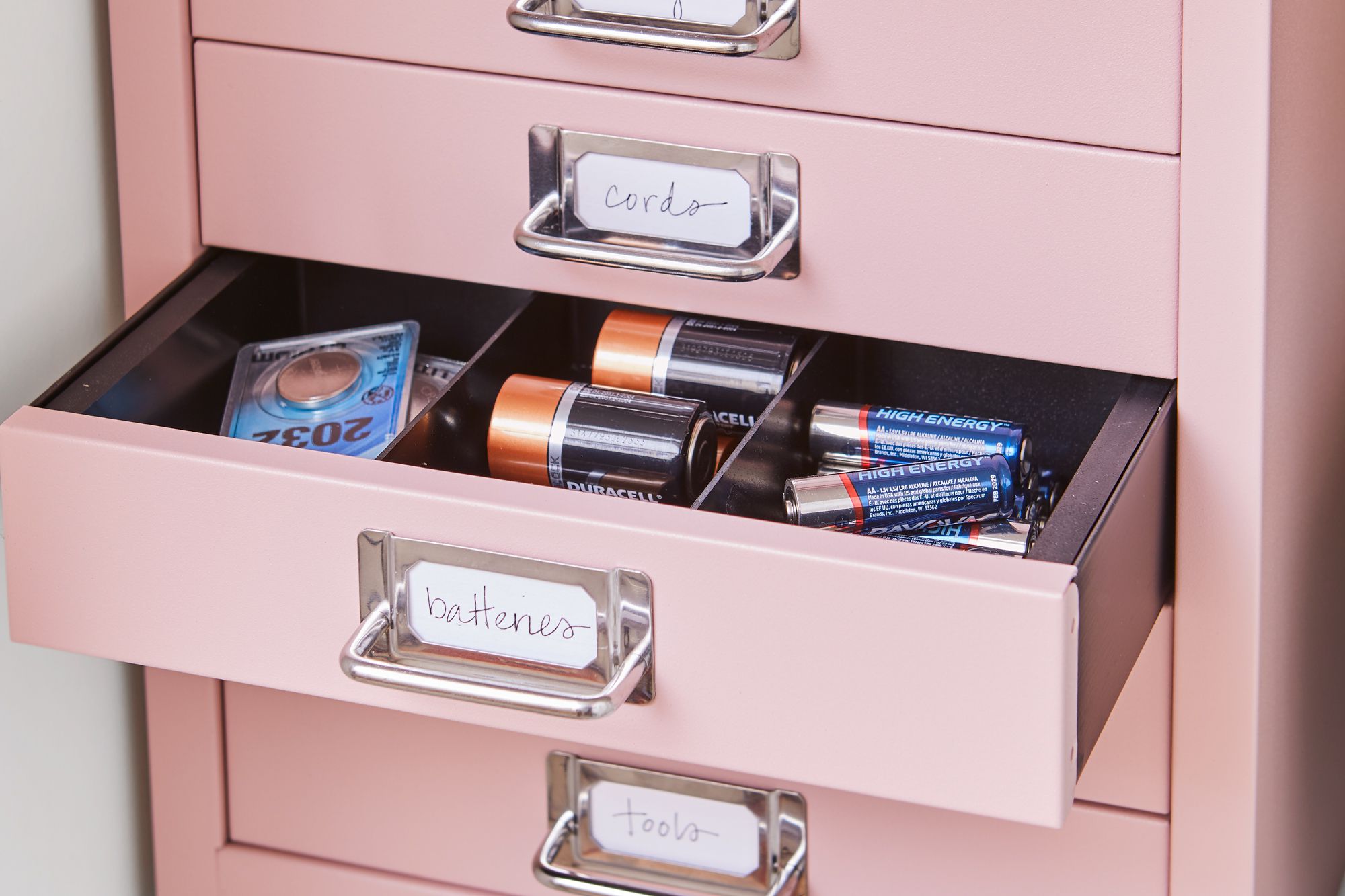

Articles
How To Store Batteries Safely At Home
Modified: August 28, 2024
Learn the best practices and tips for safely storing batteries at home. Read our informative articles on proper battery storage to prevent accidents and maximize battery lifespan.
(Many of the links in this article redirect to a specific reviewed product. Your purchase of these products through affiliate links helps to generate commission for Storables.com, at no extra cost. Learn more)
Introduction
Welcome to our comprehensive guide on how to store batteries safely at home. Batteries are an essential part of our everyday lives, powering a wide range of devices such as remote controls, toys, flashlights, and more. While batteries are generally safe to use, improper storage can pose potential risks such as leakage, corrosion, and even the possibility of fire. In this article, we will explore various techniques and best practices for storing batteries securely.
Understanding battery safety is crucial to protect both your home and the environment. When stored correctly, batteries can maintain their performance and longevity, ensuring that you always have reliable power when you need it. So, let’s dive into the world of battery storage and learn how to keep them in top shape.
Key Takeaways:
- Proper battery storage is crucial to prevent hazards like leakage and short-circuiting. Choose non-conductive containers, avoid extreme temperatures, and keep batteries dry to ensure safety and longevity.
- Label and organize batteries, regularly check for damage, and test their charge to maintain optimal performance. Proper storage techniques ensure reliable power for your devices when needed.
Read more: How To Store A Battery
Understanding Battery Safety
Before delving into storage techniques, it is important to understand the potential hazards associated with batteries. Batteries contain chemicals and produce electricity, which can lead to safety concerns if mishandled or stored improperly.
One common risk is battery leakage. When batteries are exposed to heat or when they reach their expiration date, they may leak corrosive electrolyte fluid. This fluid can damage the device or the surrounding area if it comes into contact with it. In addition, battery leakage can be harmful if it comes into contact with skin or eyes.
Another risk is the possibility of batteries short-circuiting. This occurs when the positive and negative terminals of a battery come into contact with each other, creating a pathway for an uncontrolled electric current. Short-circuited batteries can heat up rapidly and potentially cause a fire.
To minimize these risks, it is important to store batteries properly, following specific guidelines to ensure safety. Let’s explore some techniques for safely storing batteries at home.
Proper Storage Techniques
When it comes to storing batteries, following proper techniques is essential to ensure safety and maintain their performance. Here are some key tips to keep in mind:
- Choose the Right Storage Container: Opt for a sturdy and non-conductive container, such as a plastic or metal box, to store your batteries. Avoid using containers made of conductive materials like aluminum or steel, as they can increase the risk of short-circuiting.
- Create Battery Compartments: To prevent the terminals of different batteries from coming into contact with each other, consider using individual compartments within the storage container. This can be achieved by using dividers, foam inserts, or specially designed battery organizers.
- Avoid Exposure to Extreme Temperatures: Batteries are sensitive to temperature fluctuations, so it’s important to store them in a cool, dry place away from direct sunlight and sources of heat. Extreme temperatures can negatively affect a battery’s performance and potentially cause leakage or other hazards.
- Keep Batteries Away from Moisture: Moisture can lead to corrosion and damage to the battery terminals. Store batteries in a dry environment and consider using moisture-absorbing packets or silica gel to reduce humidity inside the storage container.
- Prevent Contact with Metal Objects: Metal objects, such as coins, keys, or other batteries, should be kept away from loose batteries. Metal objects can create a circuit between the positive and negative terminals of a battery, leading to short-circuiting and potential hazards.
- Labeling and Organizing Batteries: Properly labeling your batteries can help you easily identify their type, size, and charge status. Additionally, organizing them by type in designated sections can make it more convenient to locate and access the batteries you need.
- Regularly Check and Test Batteries: It’s important to periodically check your stored batteries for any signs of damage or leakage. Additionally, testing the charge level of rechargeable batteries ensures they are ready for use when needed.
By implementing these storage techniques, you can minimize the risk of battery-related accidents while keeping your batteries in optimal condition for longer periods of time.
Choosing the Right Storage Container
When it comes to storing batteries, it’s crucial to select the right storage container to ensure their safety and longevity. Here are some considerations to keep in mind when choosing a storage container:
- Material: Opt for a container made of non-conductive material, such as plastic or metal. These materials help prevent the risk of short-circuiting by providing insulation for the batteries.
- Size: Consider the size of your battery collection when choosing a storage container. Ensure that it is spacious enough to hold all your batteries comfortably, without causing them to be cramped or squeezed together.
- Compartments: Look for containers that come with built-in compartments or dividers. These compartments provide a separation between batteries, preventing the terminals from coming into contact with each other and reducing the risk of short-circuiting.
- Sealing: It’s advisable to select a container that can be securely sealed. This helps protect the batteries from moisture and dust, ensuring their longevity and reducing the risk of corrosion or damage.
- Transparent: Consider choosing a container that is transparent or have clear sections. This allows you to easily see the contents and quickly locate the desired batteries without the need to open and rummage through the container.
There are several options available in the market specifically designed for battery storage. Battery organizers, cases, and holders are designed with compartments and seals to provide optimal storage conditions. Additionally, some organizers come with adjustable compartments, allowing you to customize the space as per your battery collection.
If you prefer a DIY approach, you can repurpose small plastic containers, such as Tupperware or pill organizers, to store your batteries. Just make sure to add dividers or foam inserts to keep the batteries separated and prevent contact between the terminals.
By choosing the right storage container, you can ensure that your batteries are well-protected, organized, and easily accessible when you need them.
Creating Battery Compartments
Creating battery compartments within your storage container is an effective way to keep your batteries organized and prevent them from coming into contact with each other. Here are some methods to consider:
- Dividers: Many battery organizers or storage containers come with built-in dividers. These dividers create separate compartments for each battery, preventing the terminals from touching and reducing the risk of short-circuiting. Make sure the dividers are of the appropriate height and width to securely hold the batteries in place.
- Foam Inserts: If your storage container doesn’t have dividers, you can use foam inserts to create individual compartments for each battery. Cut the foam into small squares or rectangles, and then place them between each battery to keep them separated. This method provides additional cushioning and protection against accidental bumps or movements.
- Ice Cube Trays: Ice cube trays can also be repurposed as battery compartments. The individual sections in the tray are perfect for holding smaller batteries like AA or AAA. The tray’s structure helps keep the batteries in place and prevents them from rolling around or coming into contact with each other.
- Small Plastic Bags: If you prefer a more flexible storage option, you can use small plastic bags to create individual battery compartments. Place each battery in a separate bag and seal it tightly. Arrange the bags in rows or stacks within the storage container, ensuring that the batteries remain separated and well-protected.
Regardless of the method you choose, the goal is to create distinct compartments for each battery, ensuring that the terminals do not touch. This minimizes the risk of short-circuiting and helps maintain the integrity of the batteries.
Remember to consider the size and quantity of your battery collection when creating compartments. Leave enough space between compartments to easily insert and remove batteries without any difficulty.
By implementing these compartment creation techniques, you can keep your batteries organized, protected, and readily accessible whenever you need them.
Read more: How To Store Jewelry In A Safe
Avoiding Exposure to Extreme Temperatures
Exposure to extreme temperatures can have a detrimental effect on the performance and lifespan of batteries. To ensure optimal battery storage, it is crucial to protect them from both high and low temperatures. Here are some tips to consider:
- Avoid Heat: High temperatures can cause batteries to deteriorate faster and increase the risk of leakage. Therefore, it is important to store batteries in a cool environment, away from direct sunlight and heat sources such as radiators, stoves, or electronics that generate heat. Optimal storage temperature for most batteries is between 59°F (15°C) and 77°F (25°C).
- Prevent Freezing: Extreme cold temperatures can also negatively affect batteries. Avoid storing batteries in freezing conditions, such as unheated garages or sheds, as freezing can cause irreversible damage to the battery chemistry. If you live in an area with harsh winters, move your battery storage to a climate-controlled area inside your home.
- Temperature-Regulated Storage: If you require long-term storage for batteries, consider investing in a temperature-regulated storage unit. These units allow you to control the temperature and humidity levels, providing an ideal climate for battery storage. This option is particularly beneficial if you live in an area with extreme temperature fluctuations.
- Transportation: When transporting batteries, take precautions to avoid exposing them to extreme temperatures. During hot summer months, keep batteries in a cooler or insulated bag, away from direct sunlight. In cold weather, place them in an insulated container or wrap them in a protective layer to shield them from freezing temperatures.
By protecting batteries from extreme temperatures, you can significantly extend their lifespan and maintain their performance. It is worth noting that some types of batteries, such as lithium-ion batteries, are more sensitive to temperature variations than others, so it is especially important to store them in a controlled environment.
With proper temperature management, you can ensure that your batteries remain reliable and ready to power your devices when you need them most.
Store batteries in a cool, dry place at room temperature. Avoid extreme heat or cold, and keep them away from metal objects that could cause a short circuit. Store them in their original packaging or use a battery organizer to prevent contact with other metal objects.
Keeping Batteries Away from Moisture
Moisture can be damaging to batteries, causing corrosion and reducing their performance. To ensure the longevity and effectiveness of your batteries, it is essential to store them in a dry environment and protect them from moisture. Here are some tips to keep in mind:
- Select a Dry Storage Area: Choose a storage location that is dry and well-ventilated. Avoid areas prone to high humidity, such as basements or bathrooms, as excess moisture in the air can seep into the battery compartments and lead to corrosion.
- Desiccant Packs: Placing desiccant packs inside the battery storage container can help absorb moisture and maintain dry conditions. Desiccants, such as silica gel packets or moisture-absorbing crystals, are available commercially and can be easily found online or in stores.
- Silica Gel: Alternatively, you can use silica gel packets on their own. Silica gel is known for its moisture-absorbing properties and can effectively prevent the buildup of moisture in the storage container.
- Seal the Container: Ensure that the storage container is properly sealed to prevent moisture from entering. This will not only protect the batteries from moisture but also keep out dust and other contaminants that can affect their performance.
- Regularly Check for Condensation: Periodically inspect the battery storage container for any signs of condensation or moisture buildup. If you detect any, wipe it away immediately, and ensure that the source of moisture is addressed.
- Avoid Opening in Humid Conditions: When accessing the battery storage container, try to do so in a dry environment. Opening the container in humid conditions can introduce moisture and increase the risk of damage to the batteries.
By taking these precautions, you can ensure that your batteries remain dry and free from moisture-related issues. Remember that even a small amount of moisture can have a significant impact on battery performance, so it’s essential to prioritize keeping them dry at all times.
Protecting your batteries from moisture will not only preserve their functionality but also minimize the risk of corrosion and potential damage to the devices they power. Take the necessary steps to create a dry storage environment, and your batteries will continue to provide reliable power when needed.
Preventing Contact with Metal Objects
When storing batteries, it is important to prevent them from coming into contact with metal objects. Metal objects can pose a risk of short-circuiting the batteries, which can result in leakage, overheating, or even fire. Here are some tips to prevent contact with metal objects:
- Isolate Loose Batteries: Keep loose batteries away from metal objects to minimize the risk of accidental contact. Store them in individual compartments or use plastic bags to keep them separated.
- Avoid Mixing Batteries and Metal: Do not store loose batteries in the same container where you keep loose coins, keys, or other metal objects. This reduces the chances of these objects coming into contact and causing a short-circuit.
- Separate Battery Types: Different battery types have different chemistries, and their terminals may have varying levels of sensitivity. To avoid any potential issues, store different battery types in separate containers or compartments.
- Protective Coverings: Use electrical tape or battery terminal covers to protect the ends of batteries when they are not in use. These coverings provide an extra layer of insulation, reducing the chances of accidental contact with metal objects.
- Avoid Loose Change or Keys: When handling or storing batteries, be mindful of loose change or keys in your pockets or nearby. Accidental contact with these metal objects can damage the battery terminals or lead to a short-circuit.
- Proper Disposal of Damaged Batteries: If you come across batteries with damaged casings or exposed terminals, ensure they are safely disposed of in accordance with local regulations. Do not store damaged batteries with other batteries, as they are more prone to short-circuiting.
By taking these preventive measures, you can significantly reduce the risk of potential hazards caused by the contact of batteries with metal objects. Remember that even a small metal object, such as a coin, can create a circuit between the positive and negative terminals of a battery, leading to dangerous situations.
Keeping batteries isolated and away from metal objects ensures their safety and protects both the batteries themselves and the devices they power. Prioritize proper storage practices to avoid any accidental damage or mishaps and maintain the longevity of your batteries.
Labeling and Organizing Batteries
Labeling and organizing your batteries is an important step in maintaining an efficient and well-managed storage system. Properly labeling and organizing your batteries not only helps you locate them easily but also ensures that you use them in a timely manner and know the status of each battery. Here are some tips for effective labeling and organization:
- Label by Battery Type: Clearly label each storage compartment or container with the type of battery it holds. This makes it easy to identify the specific battery you need and helps avoid mixing different types of batteries together. Use clear and legible labels that are resistant to fading or smudging.
- Include Battery Size Information: Along with the battery type, it is helpful to indicate the size of the battery on the label. Battery sizes, such as AA, AAA, C, D, or 9V, can vary, and having this information readily visible can save time when searching for a specific battery.
- Indicate Charge Status: If you store rechargeable batteries, consider using a separate color-coded system or label to indicate the charge status of each battery. This allows you to easily identify fully charged batteries versus those that need recharging.
- Arrange Batteries by Date: If you have multiple batteries of the same type and size, it can be beneficial to arrange them by date of purchase or usage. This way, you can prioritize using the older batteries first before moving on to the newer ones, ensuring that all batteries are used efficiently.
- Use Battery Organizers: Consider utilizing battery organizers or storage cases designed with compartments and labels specifically for battery storage. These organizers often provide slots for different battery types and sizes, making organization and labeling a breeze.
- Regularly Review and Reorganize: Set aside time periodically to review and reorganize your battery storage. Check for any expired or damaged batteries and dispose of them properly. Rearrange the batteries as needed to maintain an organized system and make space for any new additions.
By labeling and organizing your batteries, you can quickly and easily find the batteries you need while ensuring they are used efficiently. This practice also helps prevent the accidental mixing of different battery types and sizes, reducing the risk of short-circuiting or damage.
Remember to keep your labels visible and legible over time by using quality label materials and avoiding exposure to moisture or direct sunlight. With a well-organized system in place, you can enjoy the benefits of easily accessible and properly managed battery storage.
Read more: How To Store Money In A Safe
Regularly Checking and Testing Batteries
Regularly checking and testing your batteries is an essential part of maintaining their performance and ensuring they are in good working condition. By incorporating this practice into your battery storage routine, you can identify any issues early on and prevent potential problems. Here are some tips for checking and testing your batteries:
- Inspect for Physical Damage: Periodically examine your batteries for any signs of physical damage, such as leaking fluid, bulging, or corrosion on the terminals. If you notice any damage, it’s important to dispose of the battery properly.
- Check Expiration Dates: Many batteries have expiration dates printed on them. Take note of these dates and regularly check if any of your stored batteries have expired. Expired batteries should be safely discarded and replaced with fresh ones.
- Perform a Voltage Test: Use a digital multimeter or a battery tester to measure the voltage of your batteries. This will give you an indication of their remaining charge. Battery testers are straightforward to use and can provide a quick snapshot of the battery’s health.
- Test Rechargeable Batteries: For rechargeable batteries, it is essential to test their ability to hold a charge. Insert the battery into the appropriate charger and monitor its charging process. If a battery fails to recharge or does not hold the charge for an adequate amount of time, it may need to be replaced.
- Rotate and Use Stored Batteries: To ensure all your batteries are used efficiently, rotate them in your devices. Avoid leaving batteries stored for long periods without use, as this can lead to reduced capacity or even complete discharge. Regularly using and replacing batteries helps maintain their overall performance.
- Keep Records: Consider keeping a record of the purchase dates and testing results for your batteries. This can help you track their lifespan and determine if any particular brand or type of battery provides better longevity or performance.
By incorporating regular battery testing into your routine, you can identify any weak or expired batteries, ensuring that you have a reliable power source when you need it. This practice also allows for the safe disposal of damaged or expired batteries, reducing the risk of accidents or environmental harm.
Remember that batteries, especially rechargeable ones, have a limited lifespan and will eventually need to be replaced. Regular testing and maintenance will help you stay ahead of potential problems and keep your devices powered up effectively.
Conclusion
Properly storing batteries is essential for maintaining their safety and performance. By following the techniques and best practices outlined in this article, you can ensure that your batteries remain in optimal condition and ready to power your devices when you need them.
Understanding battery safety is the first step towards responsible storage. By being aware of the potential risks associated with batteries, such as leakage and short-circuiting, you can take the necessary precautions to prevent accidents and protect your home and loved ones.
Choosing the right storage container is crucial for keeping batteries safe. Opt for non-conductive materials and create separate compartments to prevent the terminals from coming into contact with each other. This reduces the risk of short-circuiting and potential hazards.
Avoiding exposure to extreme temperatures is another important aspect of battery storage. Heat can cause batteries to deteriorate, while freezing temperatures can damage them. Storing batteries in a cool, dry environment ensures their longevity and performance.
Moisture can lead to corrosion and damage the battery terminals, so it’s crucial to keep batteries away from moisture. Select a dry storage area and use desiccant packs or silica gel to absorb any excess moisture and maintain a dry environment for your batteries.
To prevent the risk of short-circuiting, it is important to keep batteries away from metal objects. Metal contact can create a circuit between the positive and negative terminals of a battery, leading to potential hazards.
Labeling and organizing your batteries not only helps you locate them easily but also allows you to track their expiration dates and charge status. Regularly checking and testing your batteries ensures that they are in good working condition and helps you identify any issues before they become significant problems.
In conclusion, by implementing these storage techniques and best practices, you can ensure the safety, longevity, and optimal performance of your batteries. Remember to regularly review and update your battery storage system to maintain an efficient and well-organized setup. With proper battery storage, you can always have reliable power for your devices when you need it.
Frequently Asked Questions about How To Store Batteries Safely At Home
Was this page helpful?
At Storables.com, we guarantee accurate and reliable information. Our content, validated by Expert Board Contributors, is crafted following stringent Editorial Policies. We're committed to providing you with well-researched, expert-backed insights for all your informational needs.

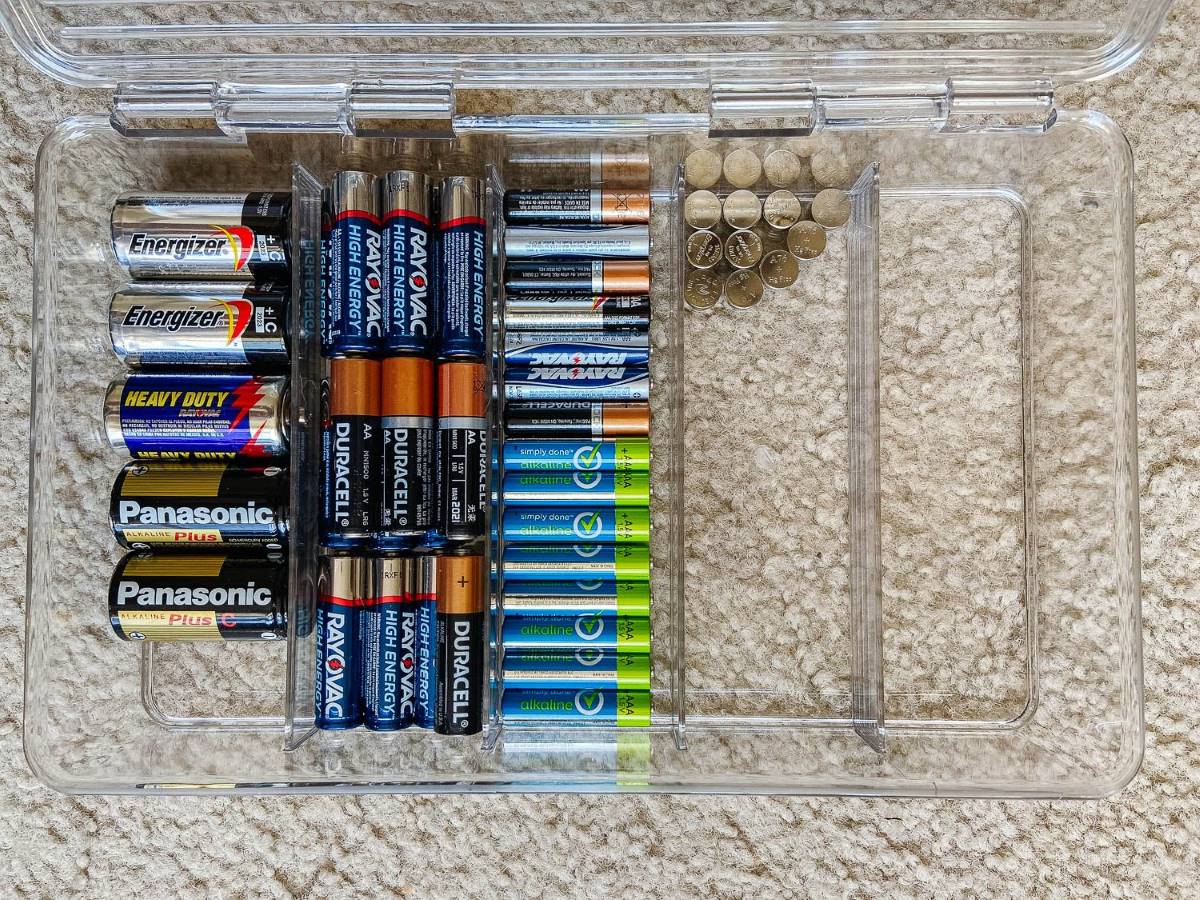
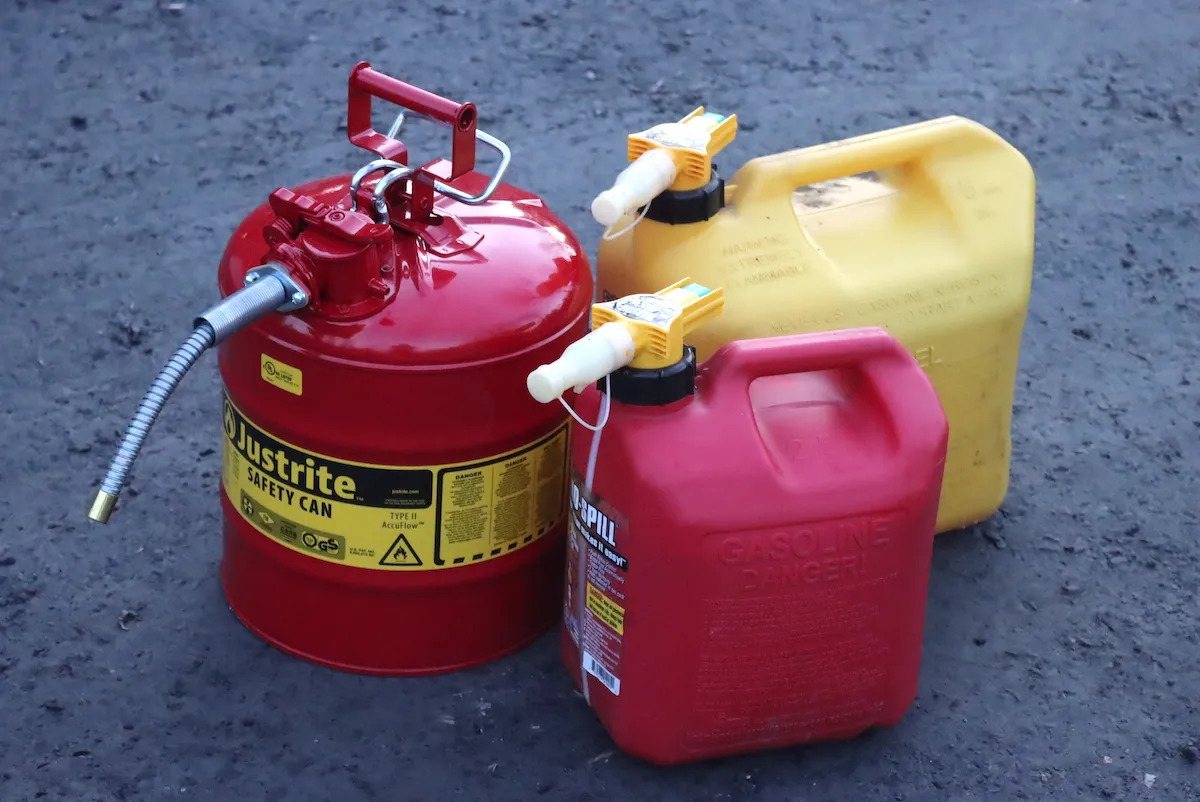
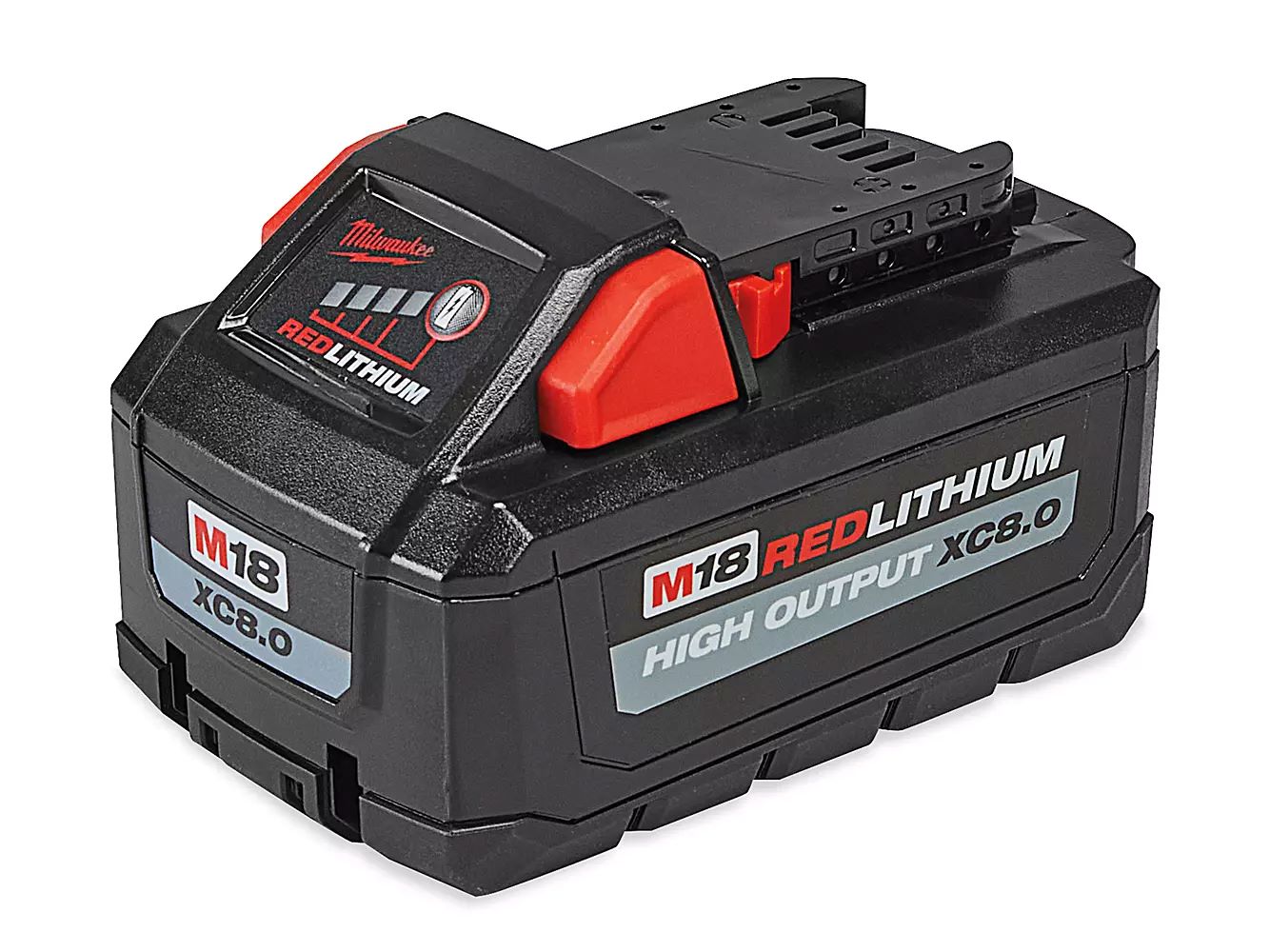

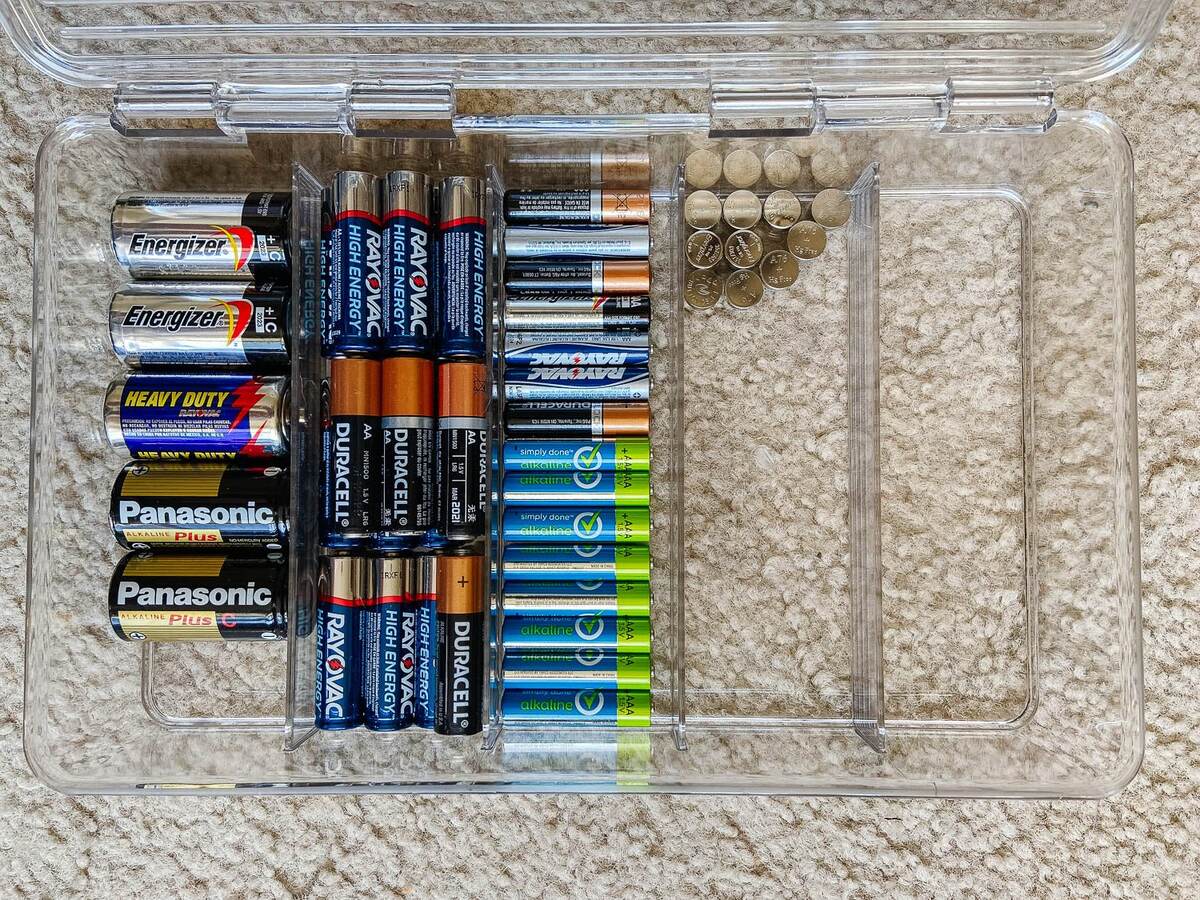



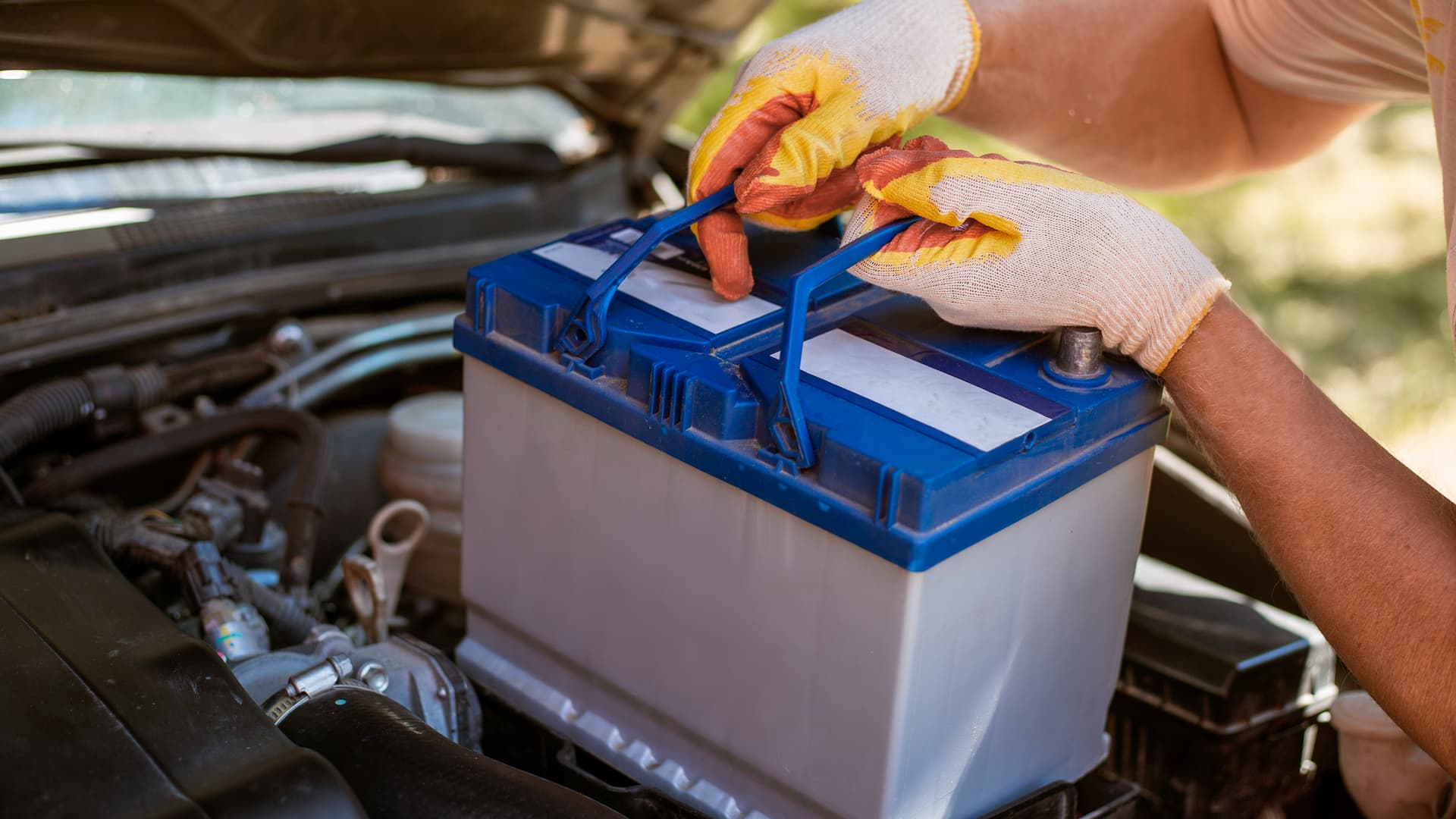
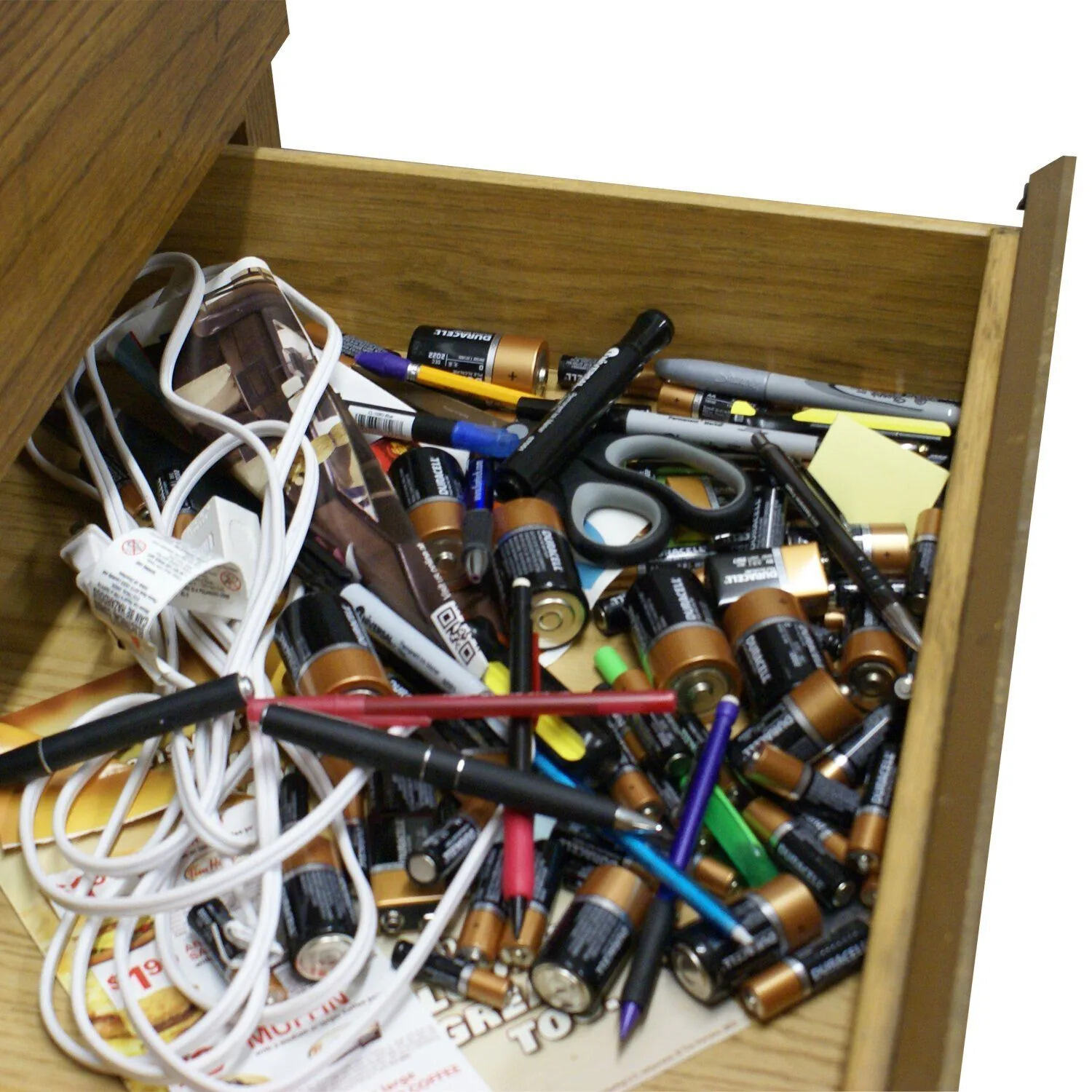



0 thoughts on “How To Store Batteries Safely At Home”